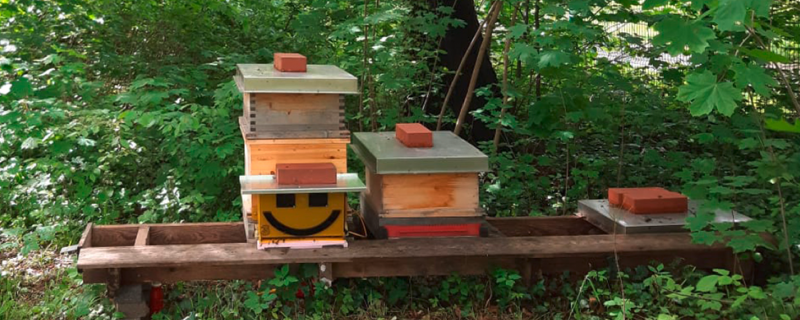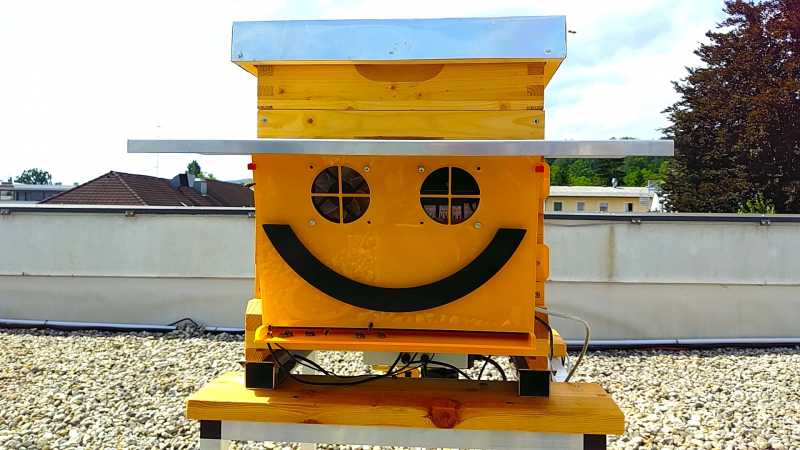Disappearing bees? 5G Bee-o-meter to the rescue
5G is the immediate future of telecoms and will transform a wide range of industries. But it might also provide part of a solution for one of the world’s most mysterious and vexing problems: the disappearance of bees.
Bees are the underappreciated driver in modern agriculture. Food and other agricultural products – which need pollination for reproduction – depend on more than 20,000 species of bees, and these bees need to thrive in wild colonies and domestic beehives. However, bee population decline has been well documented in recent years, leading to major concerns among policymakers and industry players alike. However, the exact cause of this global phenomenon is still hotly debated, with monoculture practices, climate change, pesticide use and parasites – or some complex interaction of multiple factors – all being mooted as possible culprits.

As every colony becomes more important, the ability to monitor beehives and apply serious computing power (including artificial intelligence (AI)) can make it possible for beekeepers to see small problems before they become big ones, drive more insightful research and detect long-term trends.
3 Austria (Drei Austria), anticipating the deployment of 5G across the European nations, has become a vital part of a technological effort to get into beehives and connect real-time data to AI platforms that can inform beekeepers about what is happening in their hive as it occurs.
The data are transmitted via 5G tech to a powerful AI platform.

The 5G Bee-o-meter to the rescue!
Installing the 5G-enabled Bee-o-meter begins with extending the beehive entrance, so that as the bees enter and exit the hive, they are forced to pass by an optical sensor. This monitors and records their movements on video, and these data are transmitted via 5G tech to a powerful AI platform. Affixing a powerful computer to an outdoor hive would be impractical and would still need to send results to the Internet to be useful. 5G makes it possible to quickly get masses of data to where it can be collated, assessed and then communicated to the beekeepers.
According to Thomas Schweeger, an Austrian beekeeper in the pilot programme, “5G Bee-o-meter gives me round-the-clock real-time access to the data about the beehive. Without that, I would watch the bees only once a week. But now I can watch from the office and can get alerts.”
Experienced and newly inducted apiculturists alike can benefit. For example, novice beekeepers can find it challenging to detect ‘swarming’ and to plan for it accordingly. Swarming is the phenomenon of a hive splitting into two or more colonies as it grows, allowing for more colonies to be founded. The loss of adults can result in lower honey yields and pollination capabilities. In uncontrolled cases, it can mean the loss of a whole colony as multiple waves of swarming deplete the entire population. Alerts about bee movements and hive conditions can give beekeepers a chance to act to mitigate losses.
3 Austria ... can inform beekeepers about what is happening in their hive as it occurs.
Team effort
The Bee-o-meter embraces multiple tech solutions. Matthias Baldermann, Chief Technology Officer for 3 Austria, explains that “the 5G Bee-o-meter is a good showcase, demonstrating what you could do combining real-time video, AI and 5G capabilities. 3 Austria contributed the network planning and connectivity expertise. ZTE [Corporation] provided 5G core and radio technologies and 5G CPE. And IoT40 [Systems], our partner, implemented very quickly the beehive hardware and AI training for the 5G Bee-o-meter prototype.”
As the pilot programme provides more data, additional uses are being planned. For example, video detection of the small hive beetle, a deadly pest, is being built into the next generation system. More uses are being anticipated even as plans move forward to reduce hardware costs and eventually install over 1,000 Bee-o-meters across Austria.
Albert Schittenhelm, President of the Regional Association for Beekeeping in Vienna, anticipates a range of useful data sets becoming available to detect threats to bee health.
“We beekeepers, of course, hope that [the 5G Bee-o-meter] collaboration of the three companies, ZTE, 3 Austria, and IoT40, will bring results for us. We would hope to get some backing and inputs on bee sickness, robbery, poisoning and so on, which will help us to better manage our bee-keeping challenges in the future.”
